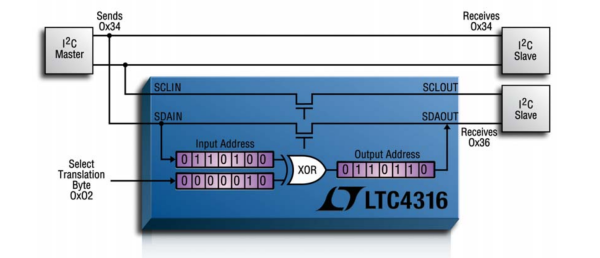The LTC4316 is something special. It’s an I²C address translator that changes the address of a device that would otherwise conflict with another on the same I²C bus. Not a hack? Not so fast. Exactly how this chip does this trick is clever enough that I couldn’t resist giving it the post it rightfully deserves.
On-the-Fly Translation
What’s so special? This chip translates the address on-the-fly, making it transparent to the I²C protocol. Up until this point, our best bet for resolving address collisions was to put the clashing chip on a separate I²C bus that could be selectively enabled or disabled. In that department, there’s the PCA9543 and PCA9547 demultiplexers which we’ve seen before. Both of these devices essentially act like one-way check valves. To address any devices downstream, we must first address the multiplexer and select the corresponding bus. While these chips resolve our address collision problems, and while there’s technically a way to address a very large number of devices if we’re not time-constrained, the control logic needed to address various bus depths can get clunky for nested demultiplexers.
What’s so classy about the LTC4316 is that is preservers simplicity by keeping all devices on the same bus. It prevents us from having to write a complicated software routine to address various sections of a demultiplexed I²C bus. In a nutshell, by being protocol-transparent, the LTC4316 keeps our I²C master’s control logic simple.
How it Works
I mocked up a quick test setup to have a go at this chip in real life. Continue reading “LTC4316 Is The I2C Babelfish”












